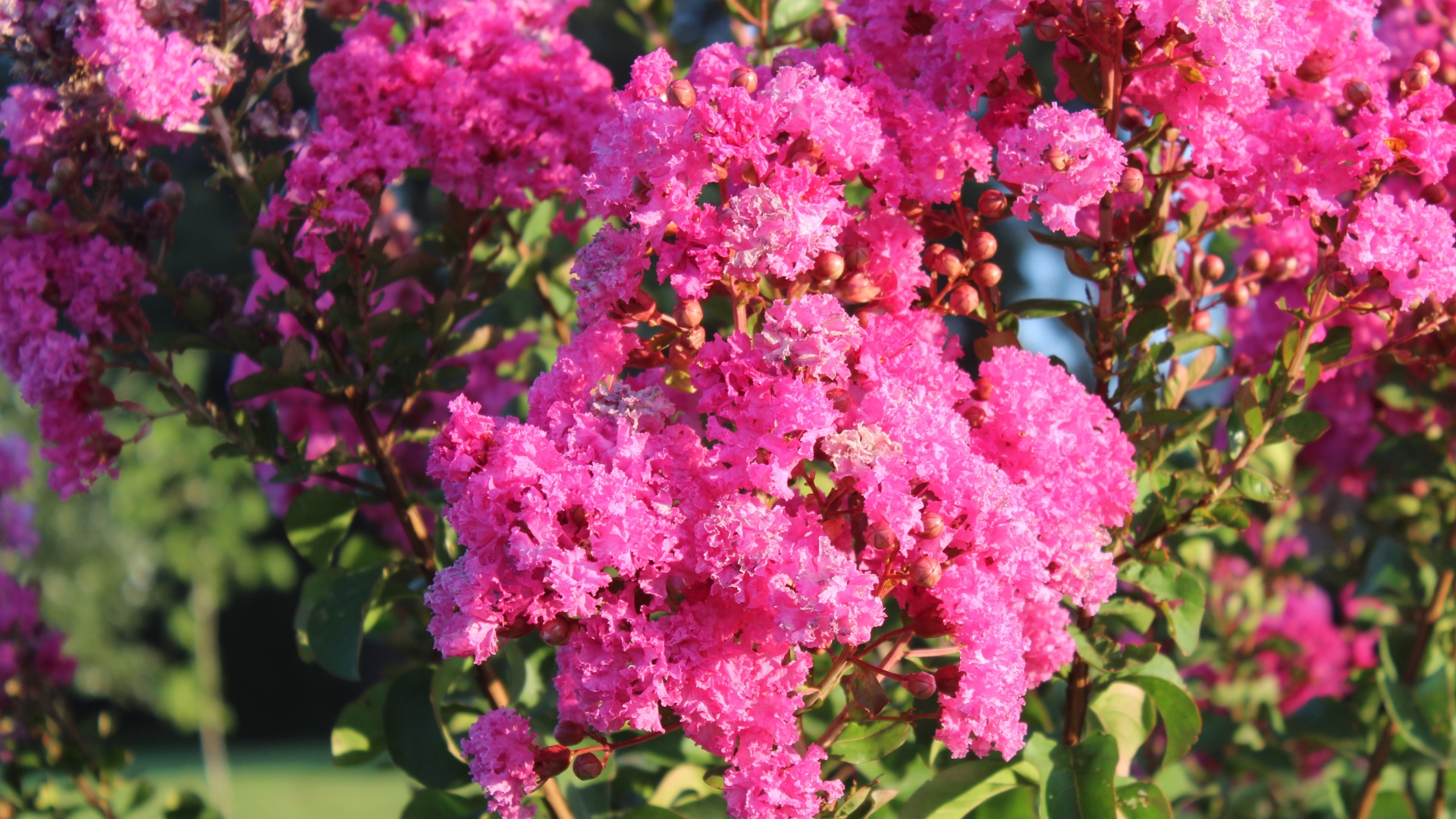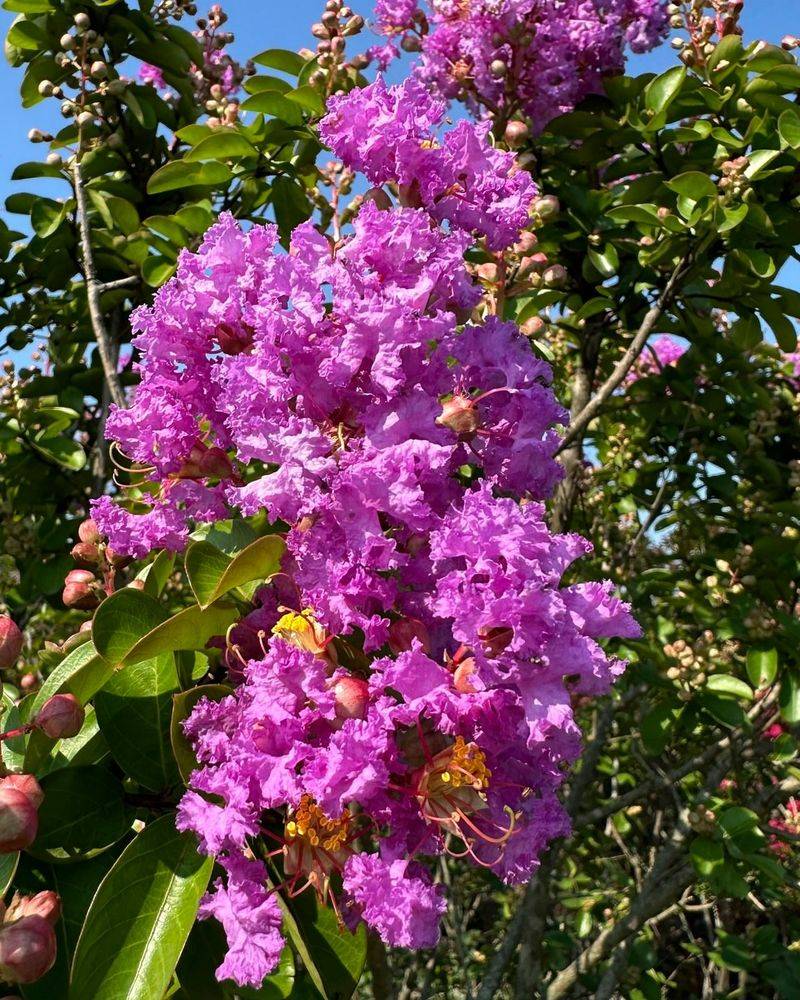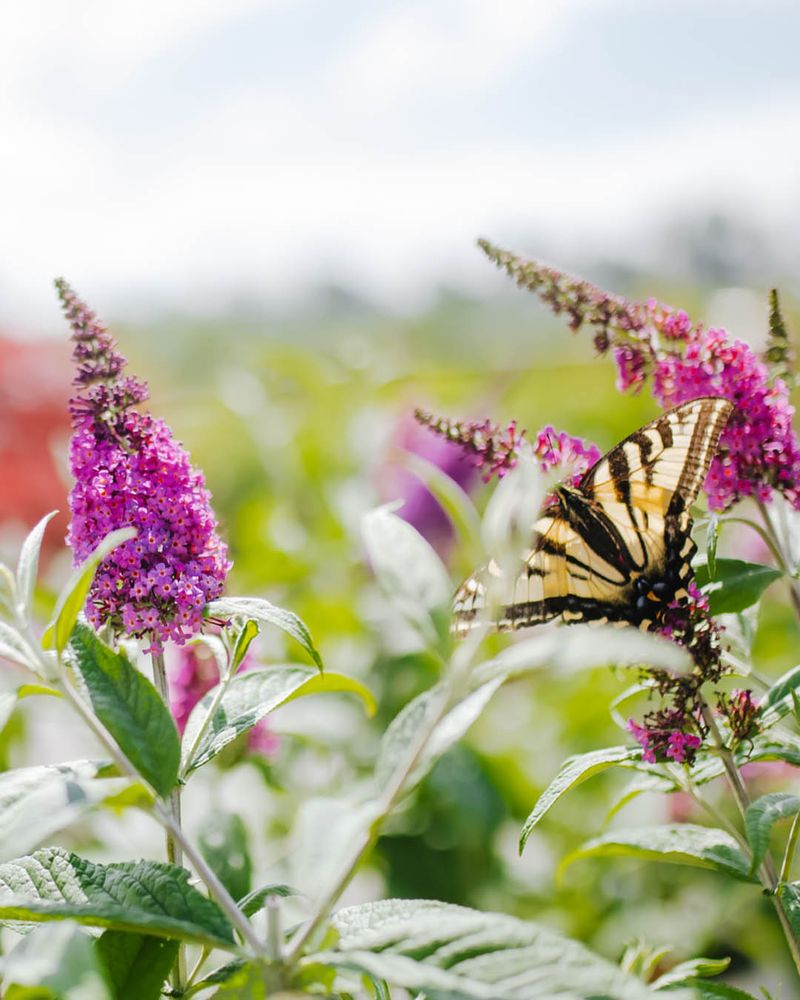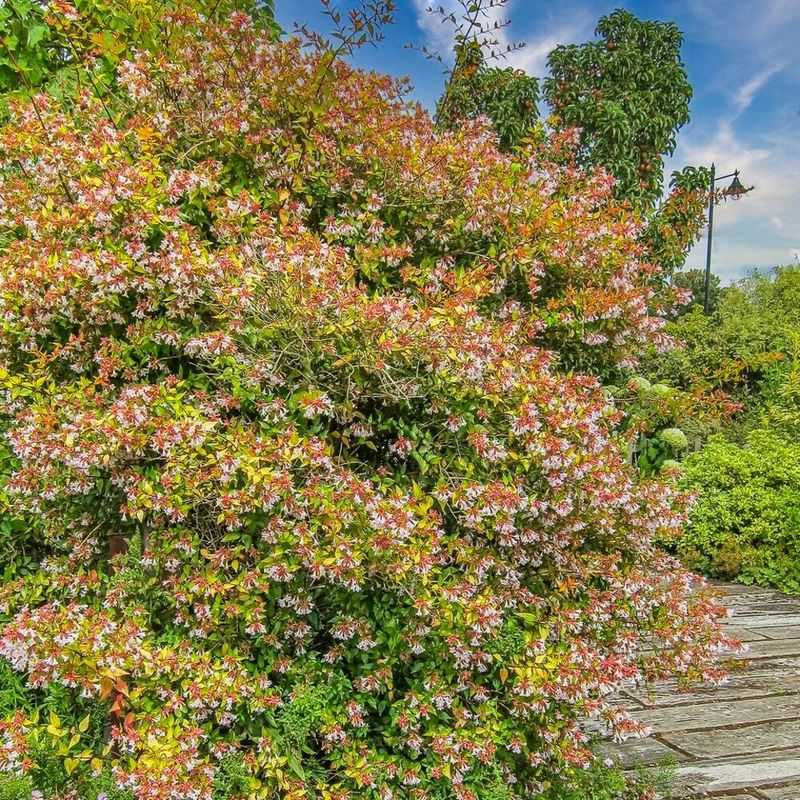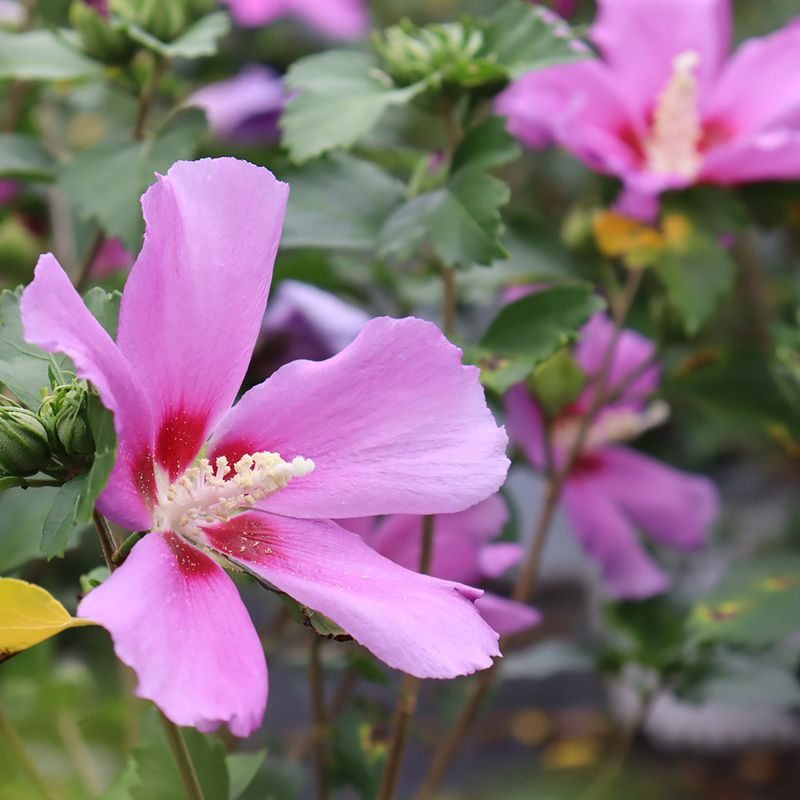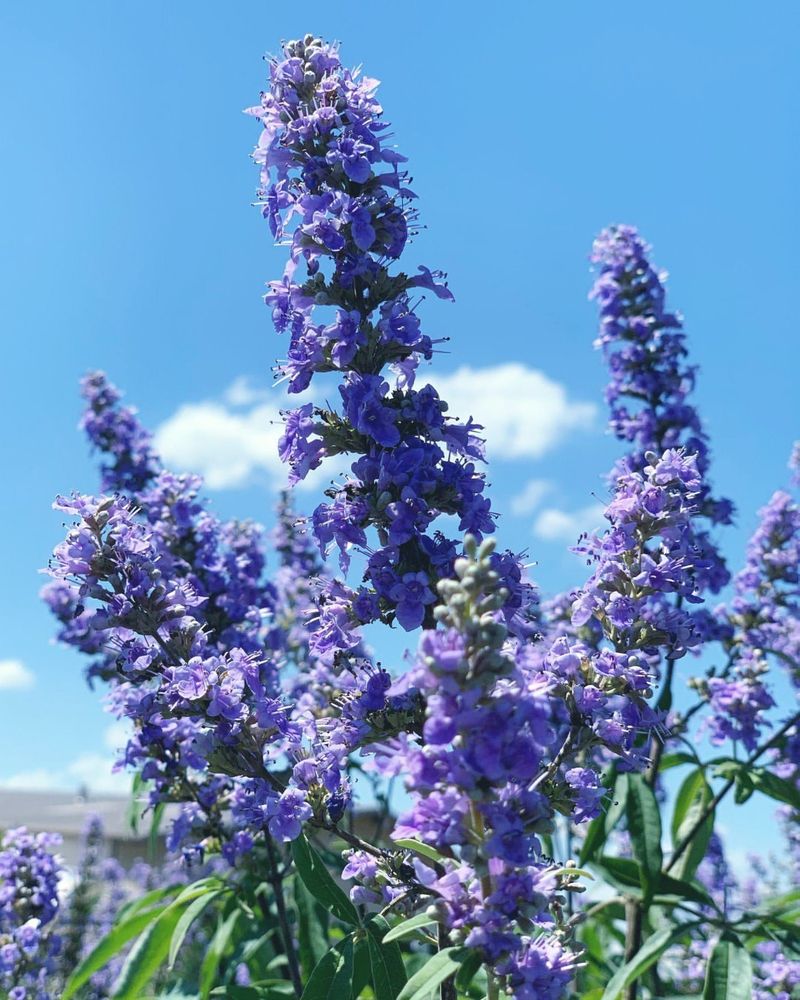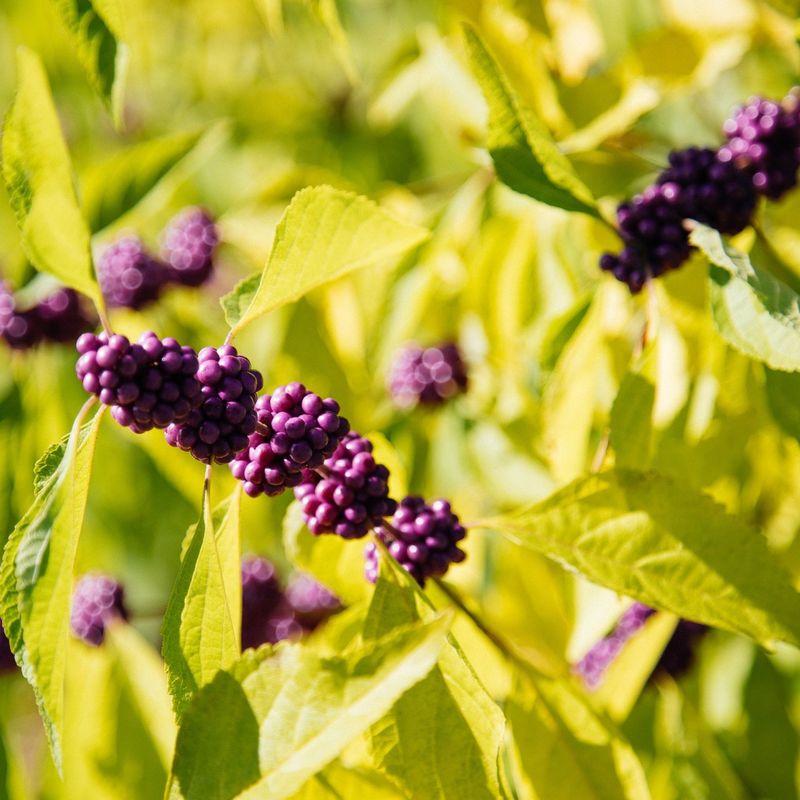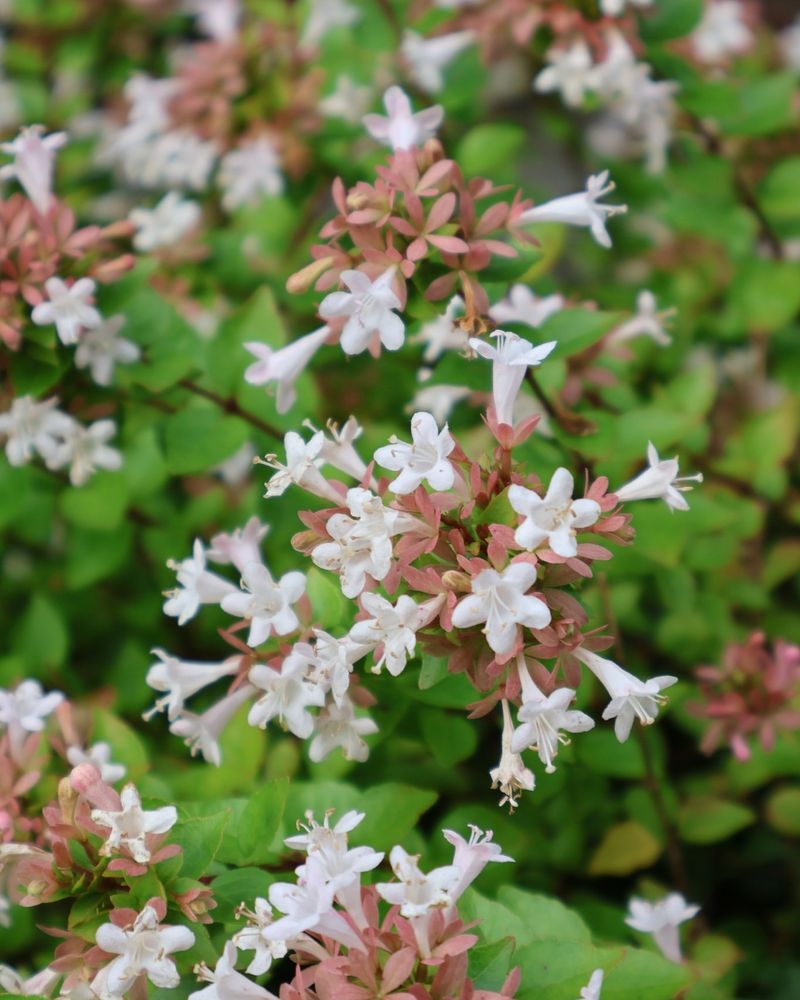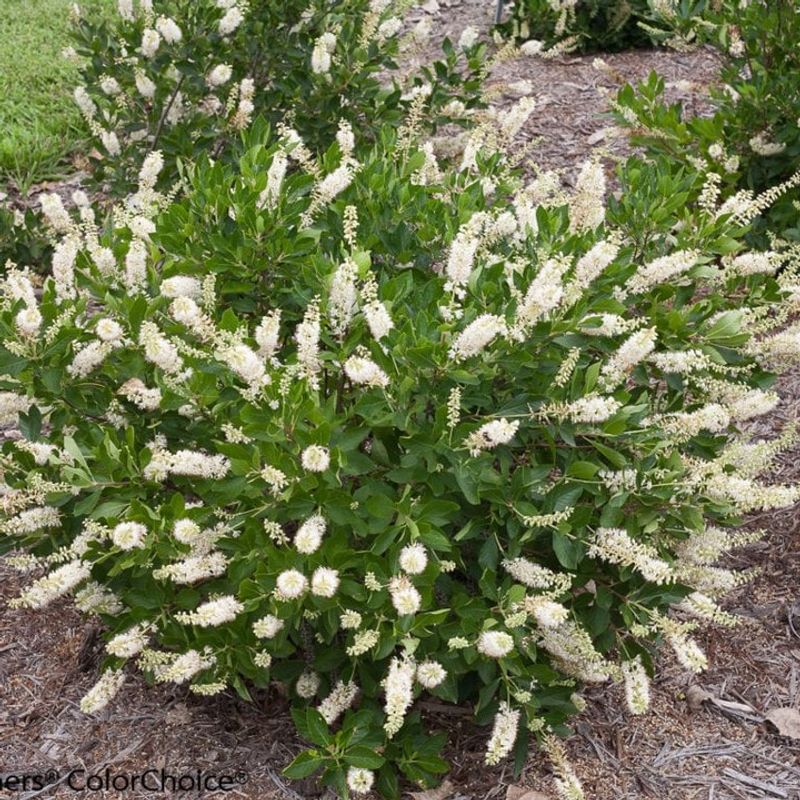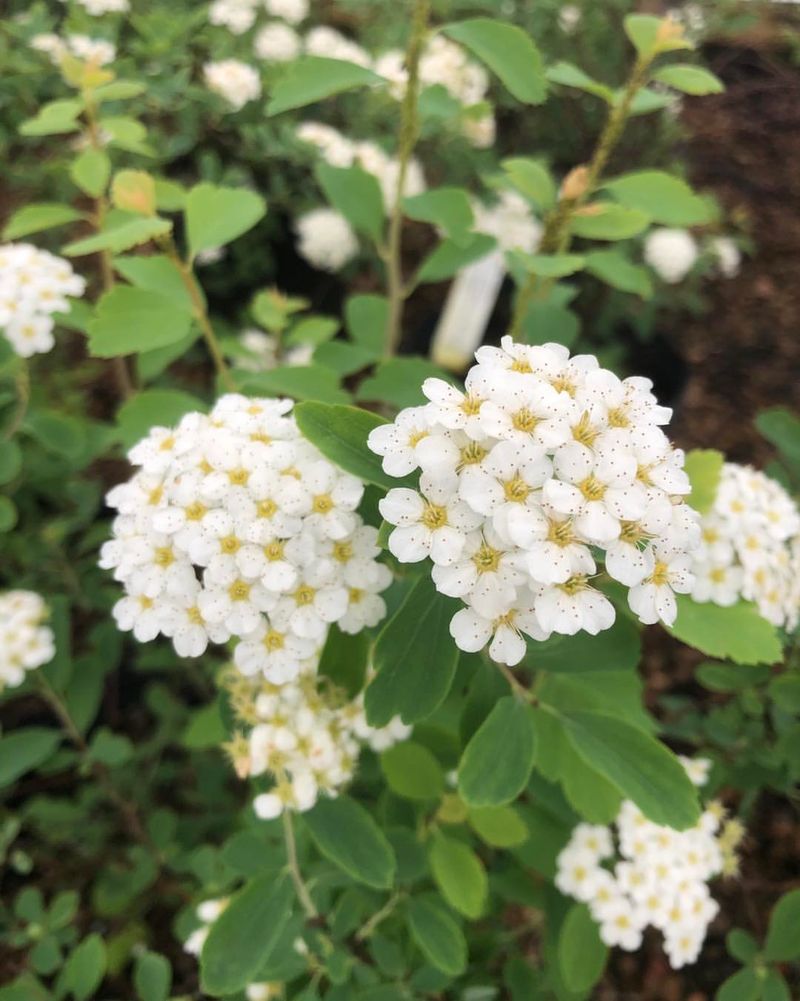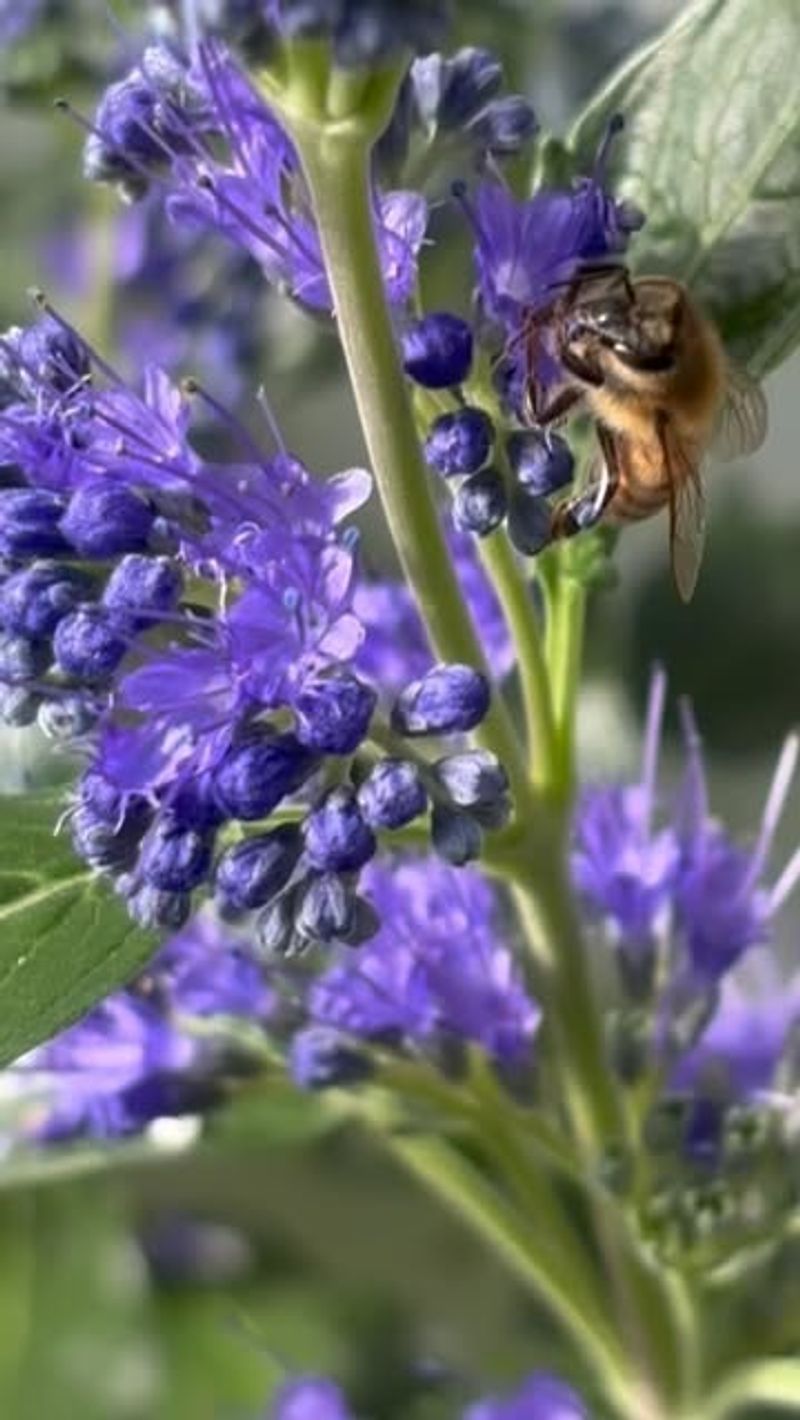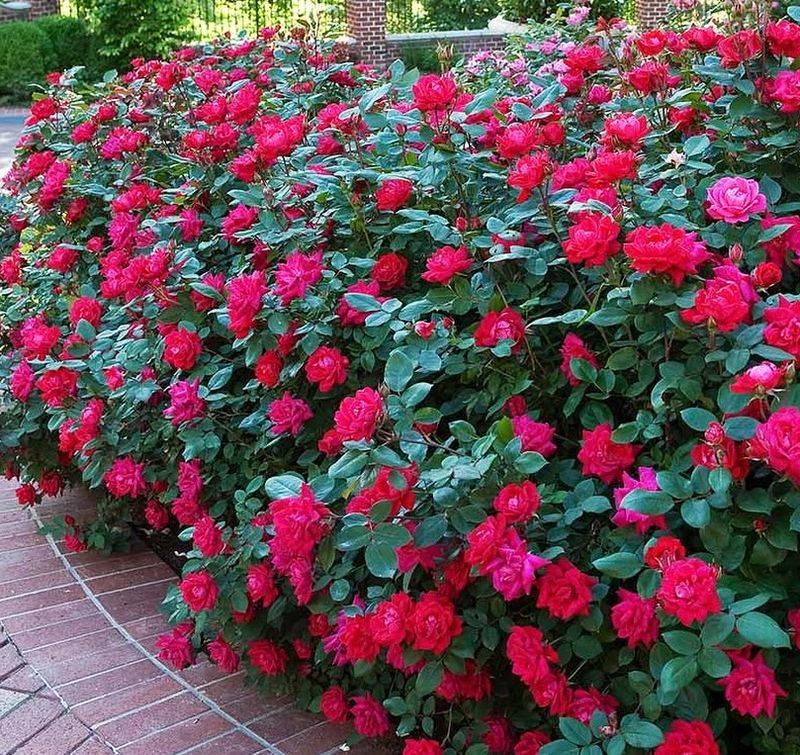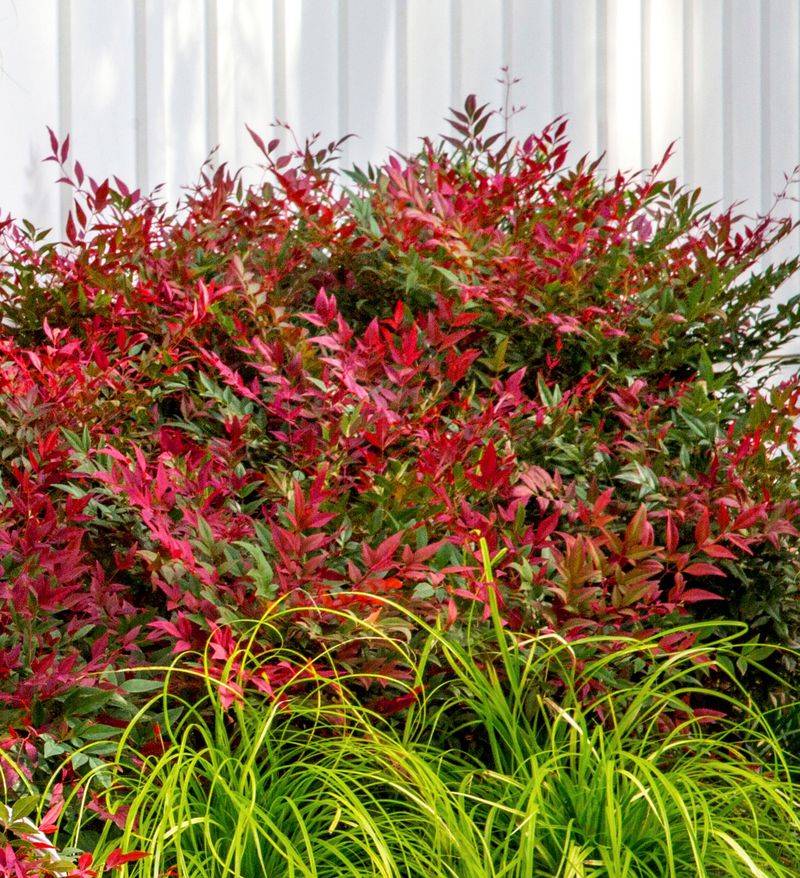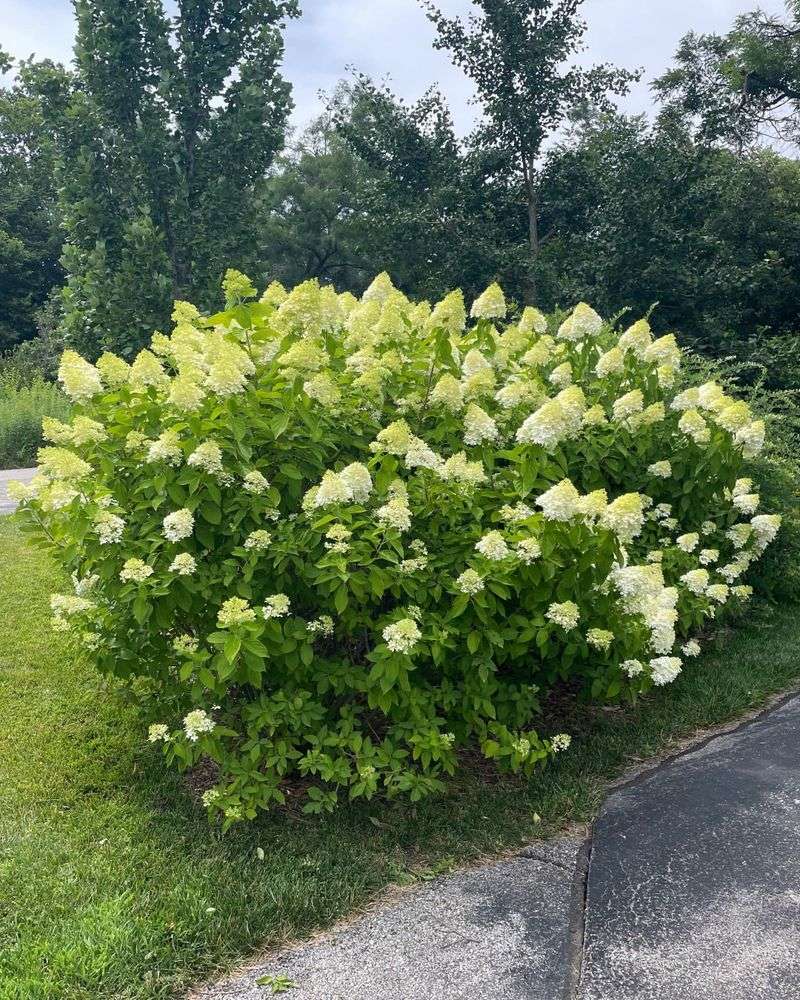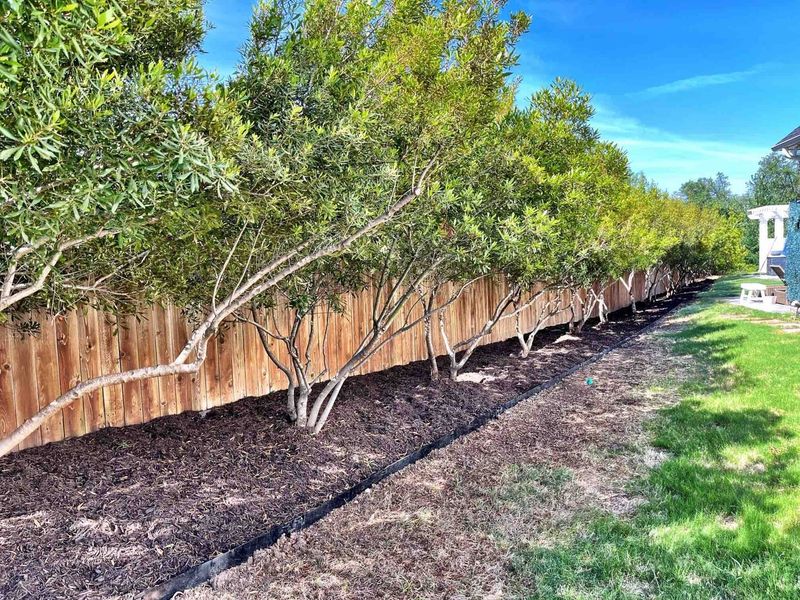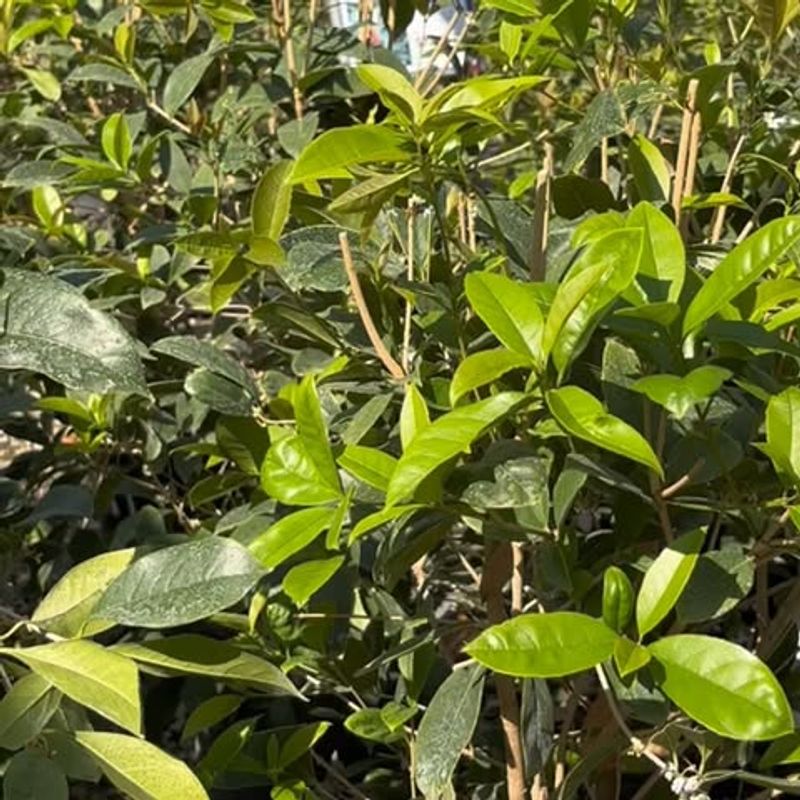Late summer is the perfect moment to give North Carolina’s shrubs a little love and shape. I’ve found that pruning now helps them bounce back strong and ready for the next season.
It’s like a fresh haircut that keeps them healthy and looking sharp. I always feel like my garden perks up right after a good trim.
If you haven’t tried pruning this time of year yet, it’s definitely worth adding to your routine.
1. Crape Myrtle
Light pruning in August helps these Southern favorites bloom longer in North Carolina gardens. Remove spent flowers and any crossing branches to improve air circulation.
Many gardeners make the mistake of heavy pruning (called “crape murder”), but gentle shaping now yields better results. Wait until winter for major structural cuts.
2. Butterfly Bush
Now’s your chance to keep these pollinator magnets looking tidy across North Carolina landscapes. Trim back by about one-third to prevent them from becoming too leggy before winter.
Careful pruning encourages a second flush of those purple, white or pink blooms that butterflies love. Don’t worry about being too gentle – these vigorous shrubs bounce back quickly.
3. Abelia
Grab those shears while the North Carolina humidity still hangs in the air! Abelias benefit from a light trim now to maintain their graceful arching form and encourage more of those fragrant white flowers.
Focus on removing any dead wood or overly long branches that disrupt the natural shape. This versatile shrub responds well to pruning without sacrificing next year’s blooms.
4. Rose of Sharon
Summer’s heat is perfect timing to shape these prolific bloomers throughout North Carolina. Snip away spent flowers and trim back any wayward branches to maintain a neat appearance.
Unlike spring-flowering shrubs, Rose of Sharon blooms on new growth, making late summer ideal for pruning. Just a light touch now prevents these vigorous growers from becoming too unruly next season.
5. Vitex
August pruning keeps these butterfly-attracting shrubs in check across North Carolina yards. Trim back those purple flower spikes after they fade to encourage a possible second bloom before fall arrives.
Many gardeners in the Tar Heel State appreciate how vitex responds to a good haircut with renewed vigor. Removing about one-third of the growth prevents the plant from becoming too woody and promotes better flowering.
6. Beautyberry
Those stunning purple berries will shine even brighter with proper timing in North Carolina gardens. Late summer pruning helps control the size and improves the display of those eye-catching berries that wildlife loves.
Focus on thinning out crowded stems rather than reducing overall height. North Carolina gardeners know that beautyberry’s informal habit looks best when it’s not over-pruned but just gently shaped.
7. Glossy Abelia
Late summer brings the perfect opportunity to shape these long-blooming favorites in North Carolina landscapes. A light trim now keeps the plant compact while preserving those fragrant pink-tinged white flowers that continue into fall.
North Carolina gardeners appreciate how this adaptable shrub responds well to pruning without sacrificing its graceful arching form. Remove any dead wood and selectively thin crowded areas for best results.
8. Summersweet
While the fragrant blooms are finishing up across North Carolina, it’s prime time to shape these native beauties. Light pruning after flowering helps maintain a tidy form without sacrificing next year’s sweet-scented display.
Focus on removing any dead branches and lightly shaping the overall form. North Carolina’s humid climate helps summersweet recover quickly from pruning, with new growth hardening off before winter arrives.
9. Oleander
In coastal North Carolina areas, these Mediterranean-style shrubs benefit from late summer shaping. Trim back after the main flowering flush to encourage a tidier form and potential reblooming before cooler weather.
Wear gloves when pruning oleander as all parts contain toxins. Many Carolina coastal gardeners appreciate how these salt-tolerant plants bounce back quickly from pruning in the warm late summer conditions.
10. Spirea
Summer-flowering varieties benefit from a quick trim now in North Carolina gardens. Snip spent flower clusters and shape lightly to maintain that appealing mounded form that makes spirea so popular.
Many gardeners across the Tar Heel State appreciate how these versatile shrubs respond to pruning with fresh growth. Unlike spring-flowering spireas, summer bloomers can be shaped now without sacrificing next year’s display.
11. Bluebeard
These pollinator magnets benefit from late summer attention throughout North Carolina landscapes. Trim back lightly after the first flush of blue flowers to encourage a second round of blooms and maintain a compact shape.
Many Carolina gardeners appreciate how bluebeard (Caryopteris) blooms on new wood, making late summer the ideal pruning time. The fresh growth has plenty of time to harden off before winter arrives.
12. Knock Out Roses
These low-maintenance favorites respond beautifully to late summer pruning across North Carolina. Trim back by about one-third to refresh the shrubs and encourage another flush of those signature blooms before frost.
North Carolina’s long growing season gives Knock Outs plenty of time to respond to pruning with new growth. Focus on removing any dead canes and shaping the overall plant for better air circulation.
13. Nandina
Late summer offers the perfect window to shape these versatile evergreens throughout North Carolina. Selective thinning now improves the plant’s natural layered look while encouraging fuller growth at the base.
Instead of shearing, remove the tallest canes completely at the ground. Many Carolina gardeners appreciate how this technique preserves nandina’s architectural form while controlling its height and promoting those bright red winter berries.
14. Hydrangea Paniculata
Panicle hydrangeas like ‘Limelight’ benefit from a light touch now across North Carolina gardens. Selectively remove any broken branches and deadhead spent blooms to keep these showstoppers looking their best.
Unlike bigleaf hydrangeas, these varieties bloom on new wood, making late summer pruning safe. North Carolina’s warm fall gives them plenty of time to harden off before winter arrives.
15. Wax Myrtle
Native to North Carolina’s coastal areas, these versatile evergreens respond well to late summer shaping. Light pruning now controls size while preserving the aromatic foliage that gives wax myrtle its signature scent.
Many Carolina gardeners value these tough natives for privacy screens. Selective pruning improves density without sacrificing the berries that attract birds throughout the winter months.
16. Hibiscus Syriacus
Late summer presents the ideal opportunity to shape these tropical-looking beauties across North Carolina. Trim back lightly after the main flowering flush to maintain a neat appearance and possibly encourage more blooms.
Many gardeners in the Tar Heel State appreciate how these resilient shrubs handle pruning with ease. Focus on removing any crossing branches and maintaining the overall vase-like shape for best flowering.
17. Sweet Olive
August pruning helps maintain these fragrant evergreens at a manageable size throughout North Carolina gardens. A light shaping now allows time for the plant to harden off new growth before winter arrives.
Many Carolina gardeners treasure sweet olive for its intoxicating scent. Selective pruning improves the shrub’s dense habit while preserving those tiny fragrant flowers that perfume the autumn air.

